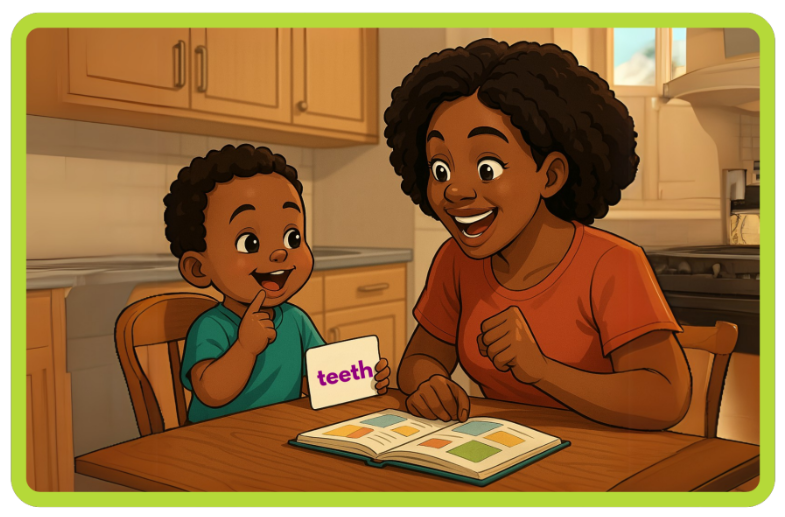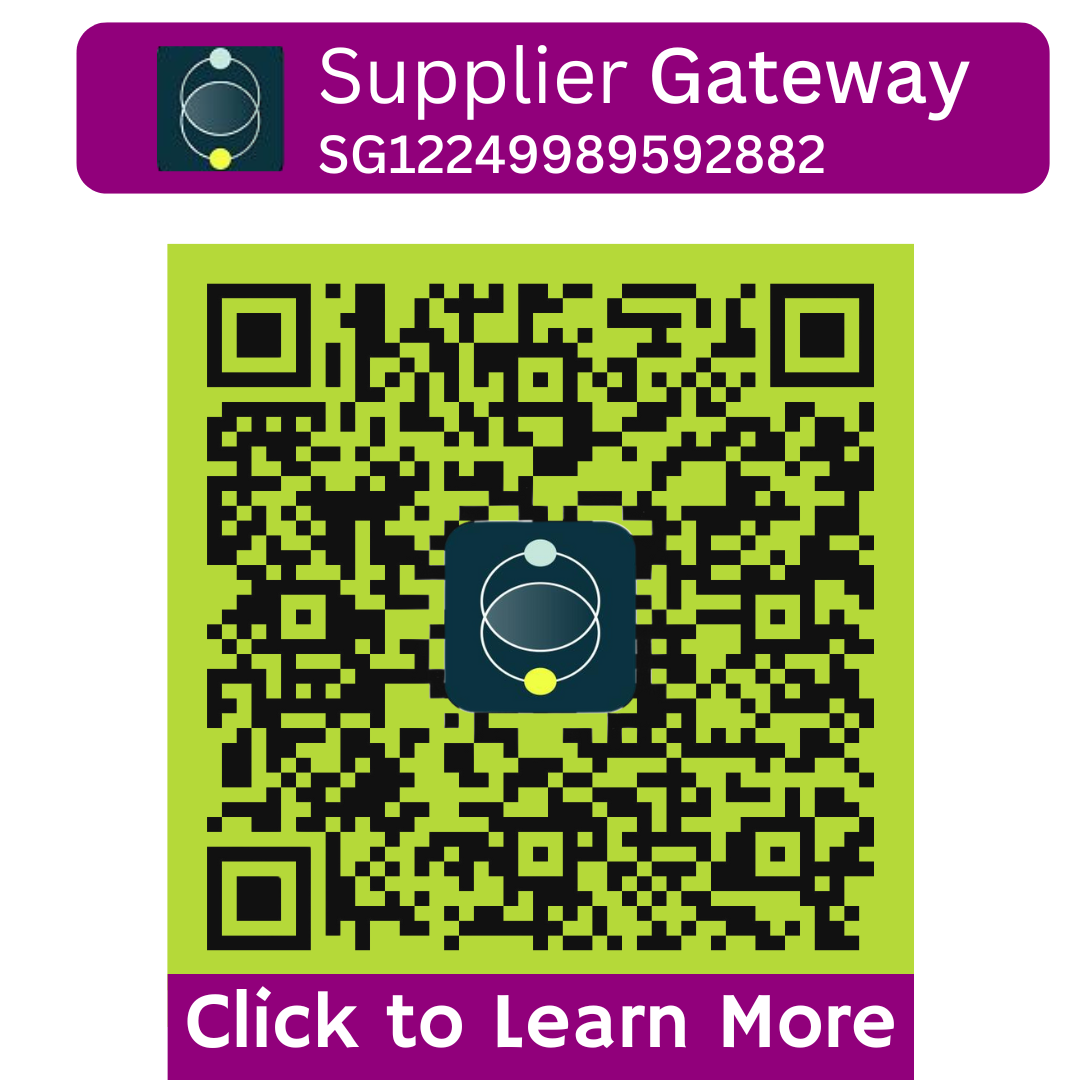The Spark That Started It All
My Why, in 3 Videos
They say inspiration is the greatest currency we have as a people, and therefore, the most valuable resource I can share with you is just that—inspiration.
I’ll never forget the moment I saw two videos of a 3-year-old confidently reading aloud. That moment changed everything for me. It was proof that early literacy is possible—and it sparked this movement.
Now, I want to share that inspiration with you.
Here, I’ve curated 3 videos that showcase the remarkable abilities of young children who learned to read before the age of five. These children demonstrate fluent, confident reading— proof that with the right guidance and support, your child can achieve this too.
Real moments. Real kids. The turning point that sparked the early literacy movement.


It’s like a Reading Matrix — when the window is open.
Their Brain Is Built for This Moment!
From birth to age five or six, children experience a once-in-a-lifetime window when their brains are wired to absorb language with incredible ease. This is the window we must maximize.
Think about it:
- How do babies learn to speak without teachers, textbooks, or quizzes?
- Between ages 0–3, they absorb language naturally, simply by listening and observing.
- After age four, this effortless learning ability begins to fade.
We owe it to our children to maximize this critical period. Imagine the impact of a generation of five-year-olds starting kindergarten already reading at a 2nd- to 4th-grade level.
Please Note: A child who starts learning to read between ages 4–6 can still benefit greatly—but the earlier, the better.
Typical Timeline
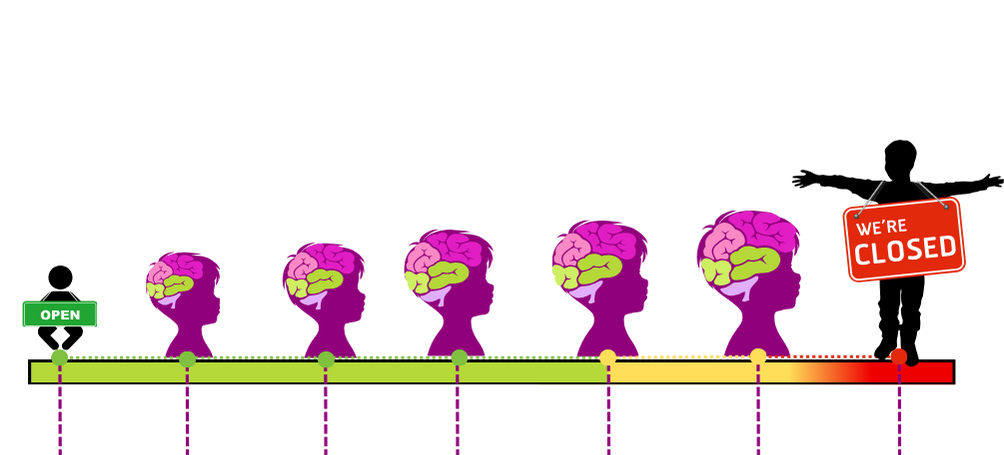
Word First Timeline
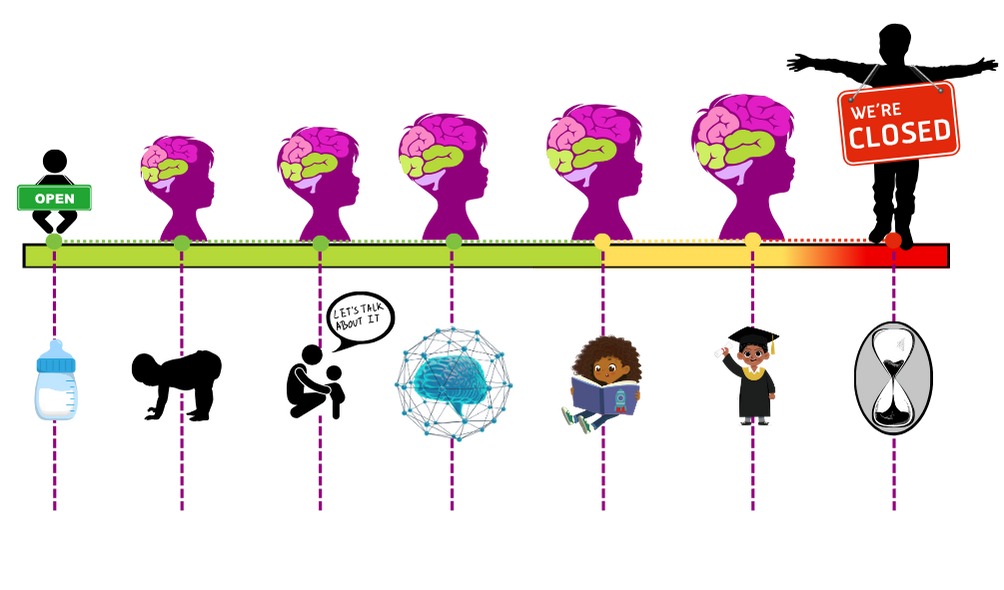
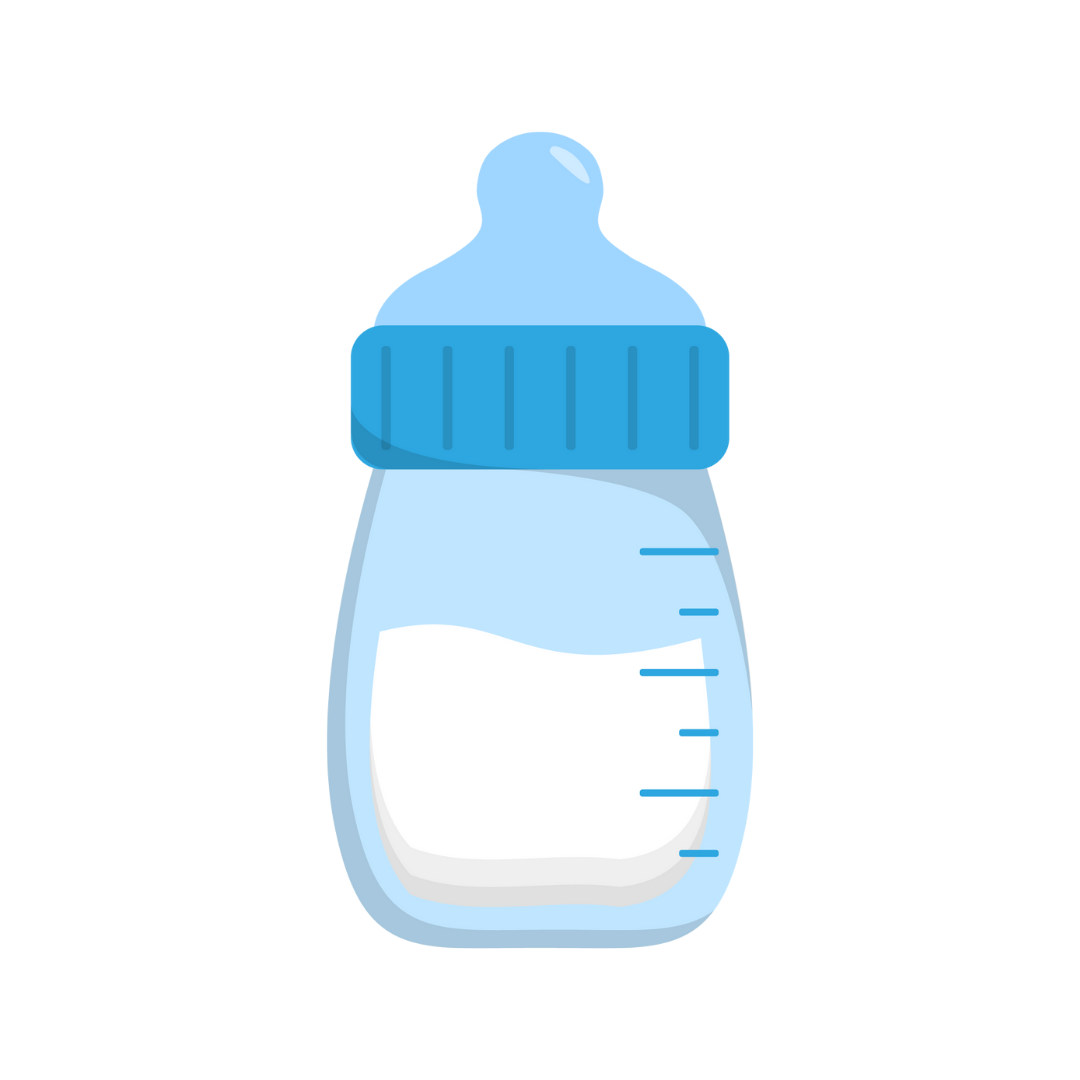 Your baby’s brain is a sponge! Even before they say their first word, they are absorbing everything you say. Their brain is already wiring itself for reading—if you start exposing them to words now!"
What to Do: Talk constantly, use rich vocabulary, sing your favorite songs.
Your baby’s brain is a sponge! Even before they say their first word, they are absorbing everything you say. Their brain is already wiring itself for reading—if you start exposing them to words now!"
What to Do: Talk constantly, use rich vocabulary, sing your favorite songs.
 Your child understands hundreds of words before they even speak! With early exposure, they can start recognizing simple words by sight as early as 12–18 months." What to Do:Label objects. Show the word "Ball" while holding a ball. Label everything in their world.
Your child understands hundreds of words before they even speak! With early exposure, they can start recognizing simple words by sight as early as 12–18 months." What to Do:Label objects. Show the word "Ball" while holding a ball. Label everything in their world.
 Most toddlers are just starting to speak—but with early exposure, they can recognize words in books and around the home!" What to Do: Use word books and matching videos daily. Slide your finger left to right as you read.
Most toddlers are just starting to speak—but with early exposure, they can recognize words in books and around the home!" What to Do: Use word books and matching videos daily. Slide your finger left to right as you read.
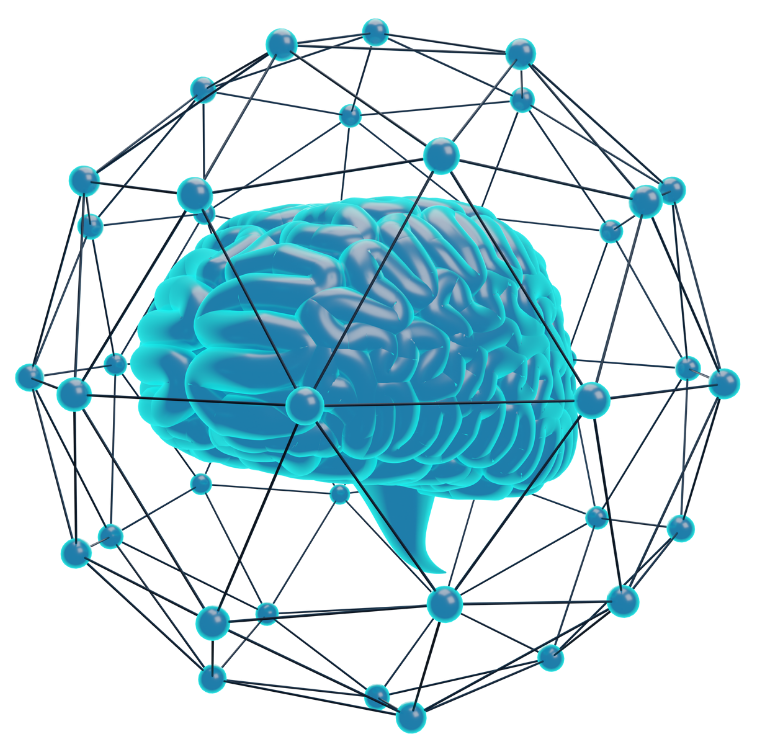 While others are learning to talk, your child is learning to read. They recognize words on sight and may read simple books with support." What to Do: Consistency is KING. Move on after mastery, and always review past books.
While others are learning to talk, your child is learning to read. They recognize words on sight and may read simple books with support." What to Do: Consistency is KING. Move on after mastery, and always review past books.
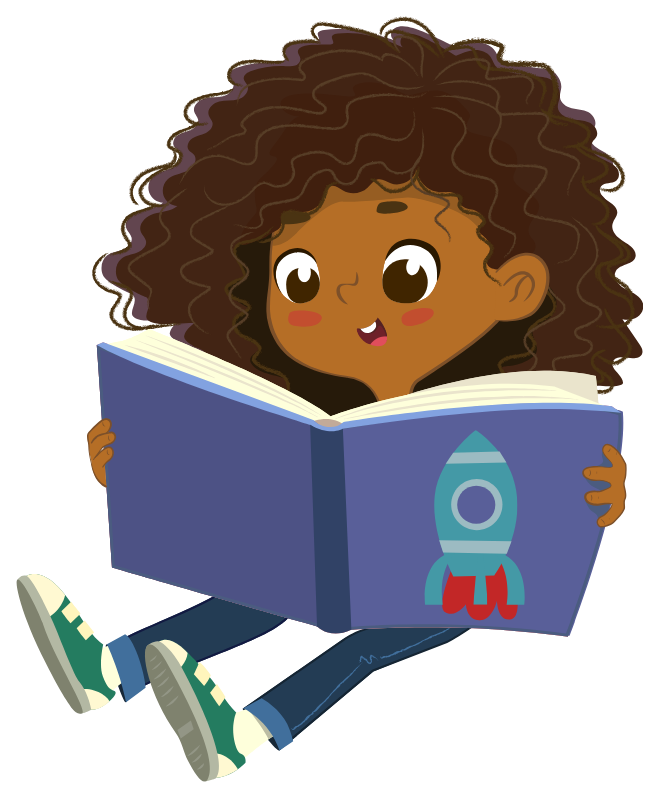 Your child is reading! They recognize hundreds of words, sound out new ones, and retell stories." What to Do: Encourage daily reading aloud, writing, and decoding practice.
Your child is reading! They recognize hundreds of words, sound out new ones, and retell stories." What to Do: Encourage daily reading aloud, writing, and decoding practice.
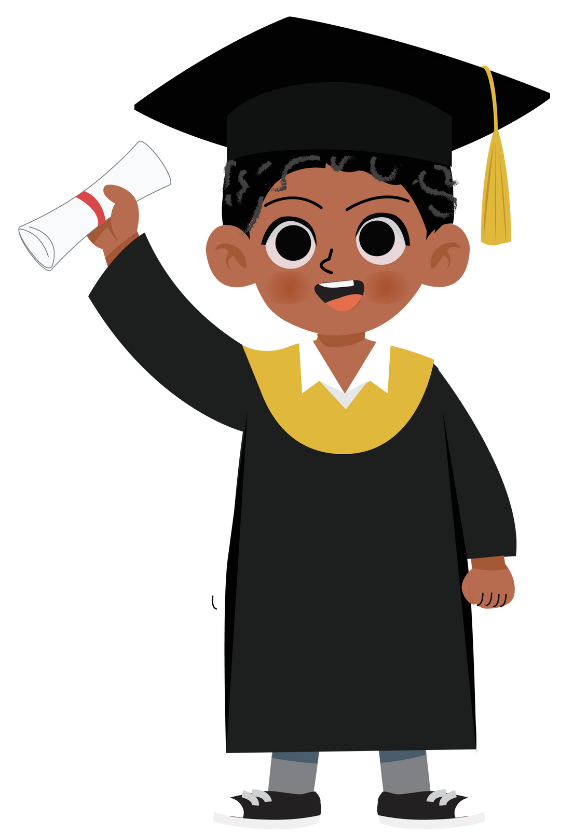 Your child is READING TO LEARN. They read early chapter books and explain what they read. Many reach a 2nd–4th grade reading level before kindergarten." What to Do: Introduce chapter books and comprehension check-ins.
Your child is READING TO LEARN. They read early chapter books and explain what they read. Many reach a 2nd–4th grade reading level before kindergarten." What to Do: Introduce chapter books and comprehension check-ins.
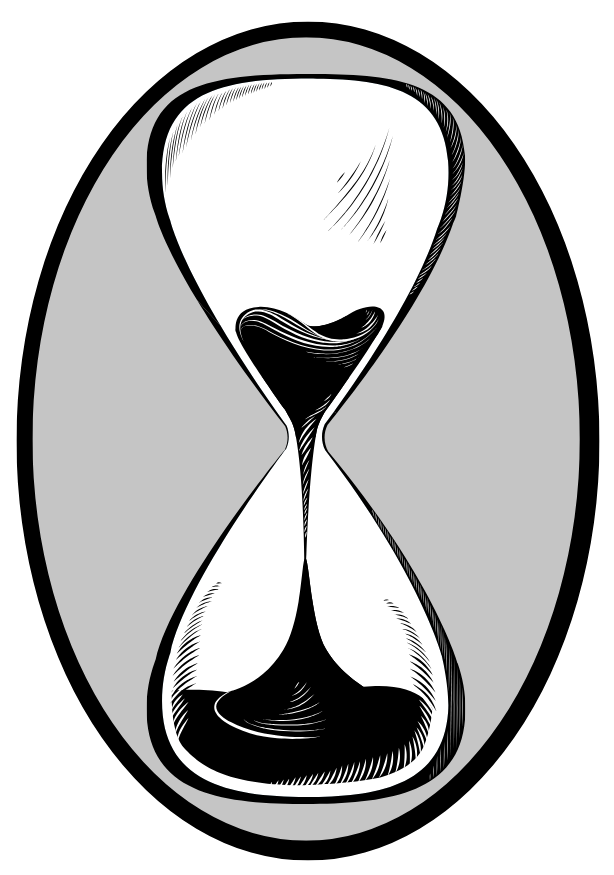 By age 6, the natural language window begins closing. But with the Word-First Method™, older children can still make rapid progress." What to Do: Stay consistent. Use the One Word at a Time Method™ and celebrate every win.
By age 6, the natural language window begins closing. But with the Word-First Method™, older children can still make rapid progress." What to Do: Stay consistent. Use the One Word at a Time Method™ and celebrate every win.
The Science Behind Early Literacy: A Natural Window for Learning Language with Ease From birth to age five, children experience a once-in-a-lifetime window where they absorb language effortlessly. This window opens at birth, begins to narrow by age four, and closes permanently around age five or six. During this critical period, children’s brains are uniquely wired to absorb language at a high level—whether it’s understanding spoken words, speaking a new language, signing, or even reading.
Think about it:
- How do babies learn to speak without teachers, textbooks, or quizzes?
- Between ages 0–3, they absorb language naturally, simply by listening and observing. It’s effortless, intuitive, and driven by the brain’s natural ability.
- But after age four, this effortless learning ability begins to fade—and reading, language, and comprehension skills become harder to acquire. Please Note–A child who starts learning to read between ages 4–6 can still benefit, but they’ll face greater challenges than if they had begun earlier.
We owe it to our children to maximize this critical period. Imagine the impact of a generation of five-year-olds starting kindergarten already reading at a 2nd- to 4th-grade level.
The window is open—but it won’t stay open forever
RESOURCE ALERT! Maximize Your Child’s Learning Window
During this brief window, your child is primed to absorb language effortlessly. To make the most of this critical stage, start with the right approach.
Our Mini ‘How-To’ Guide for Word Learning provides a simple, proven method to introduce words effectively—without frustration
Why Early Literacy Matters
Why It’s Critical:
- Research consistently shows that children who are taught to read earlier read better and enjoy reading more. Conversely, children who learn to read later often struggle with frustration and acquire lower reading levels for life.


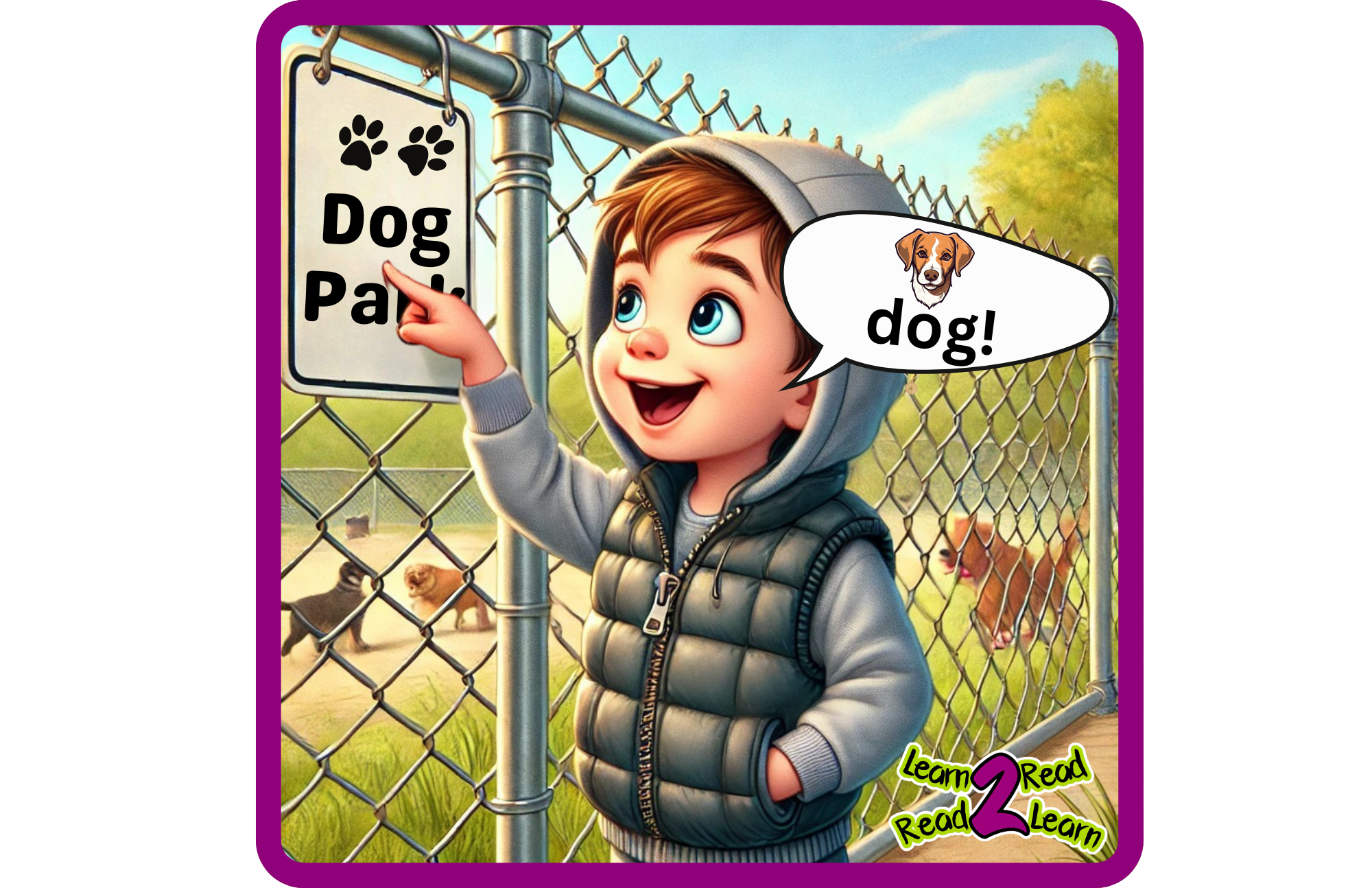
Your Child’s Breakthrough Moment
Watch The Magic Happen
What if I told you your child is just 50–60 words away from unlocking a reading superpower?
It’s called The Word Explosion.
At around 50–60 words, something incredible happens:
- Your child learns to recognize and absorb new words naturally—understanding that every object has a written word.
- Their learning momentum skyrockets, making it faster and easier to pick up new words.
- They begin spotting words everywhere—on road signs, menus, books, and more!
- Their desire to learn new words grows, fueling their curiosity and love for reading.
- Once this breakthrough happens, there’s no stopping them!
RESOURCE ALERT! Unlock the Word Explosion
Ready to Make It Happen? Start Here!
The key to reaching the Word Explosion is consistent repetition and real-world word exposure!
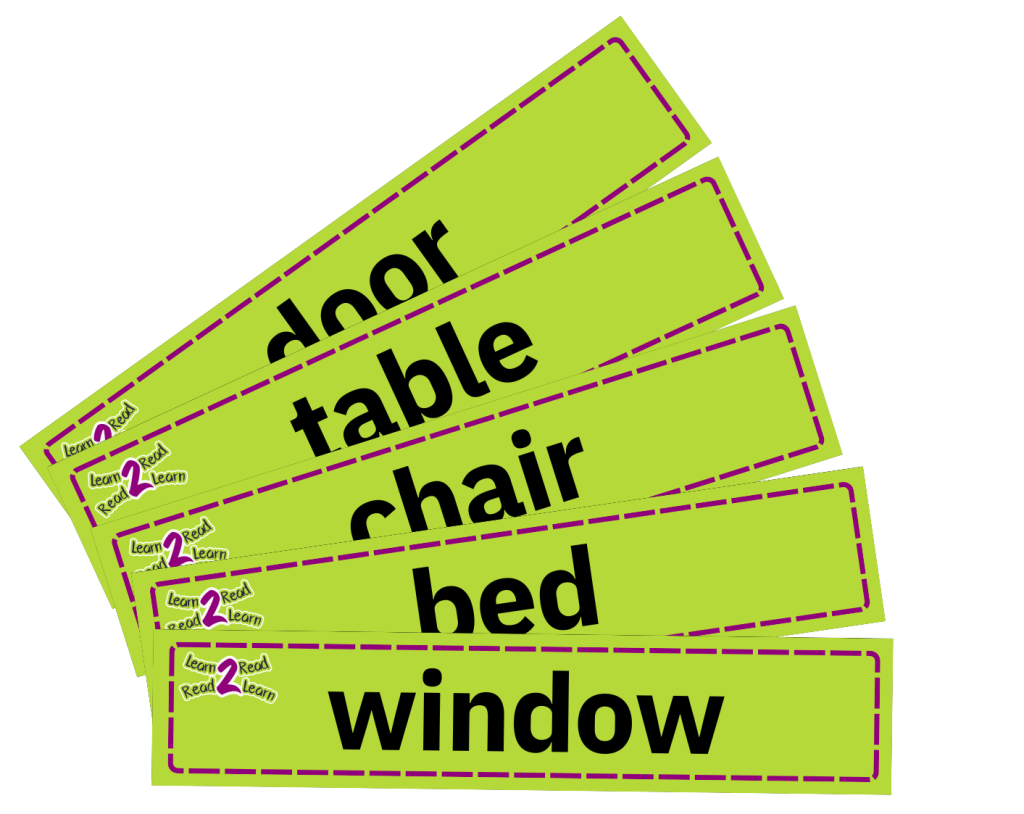
Step 1:
Start by labeling everyday objects in your home so your child connects words to real things.
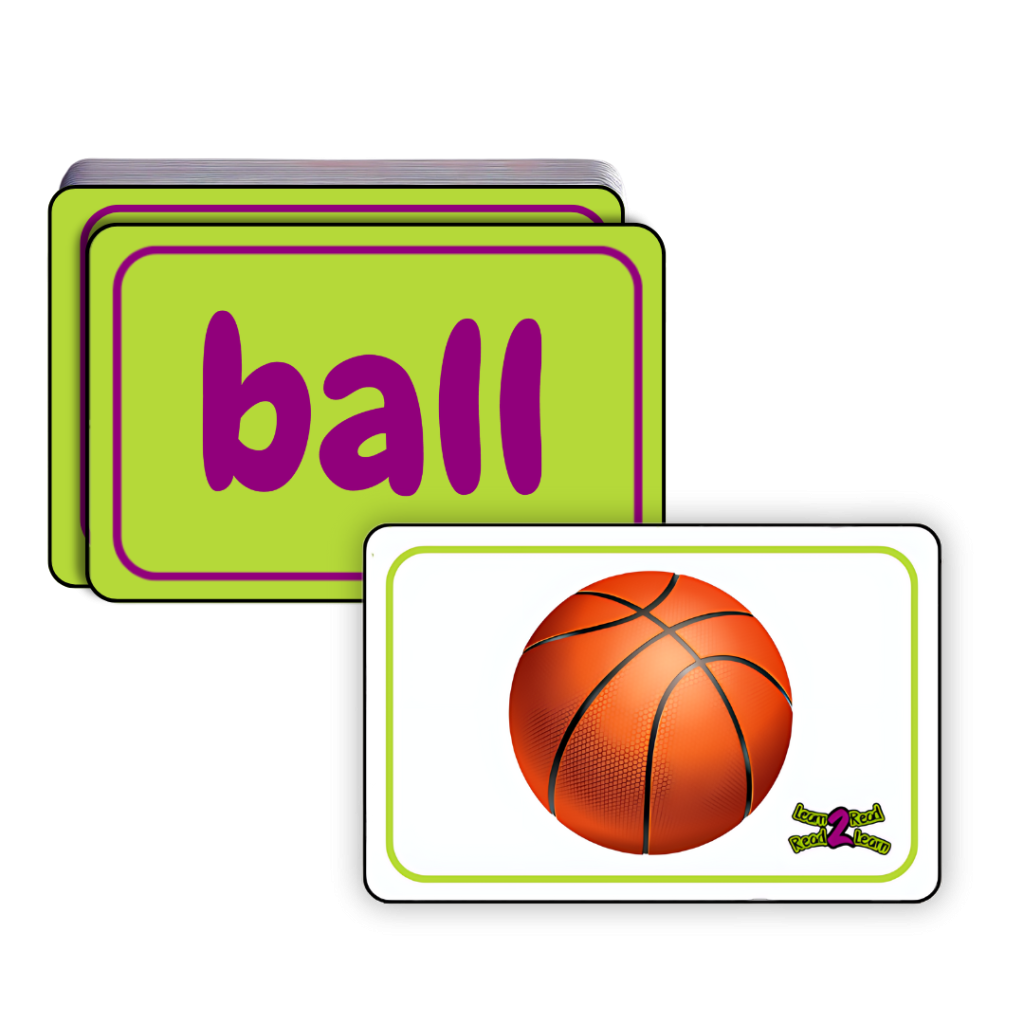
Step 2:
Use our 10 Words Flashcards for just 15–20 minutes a day to reinforce learning.
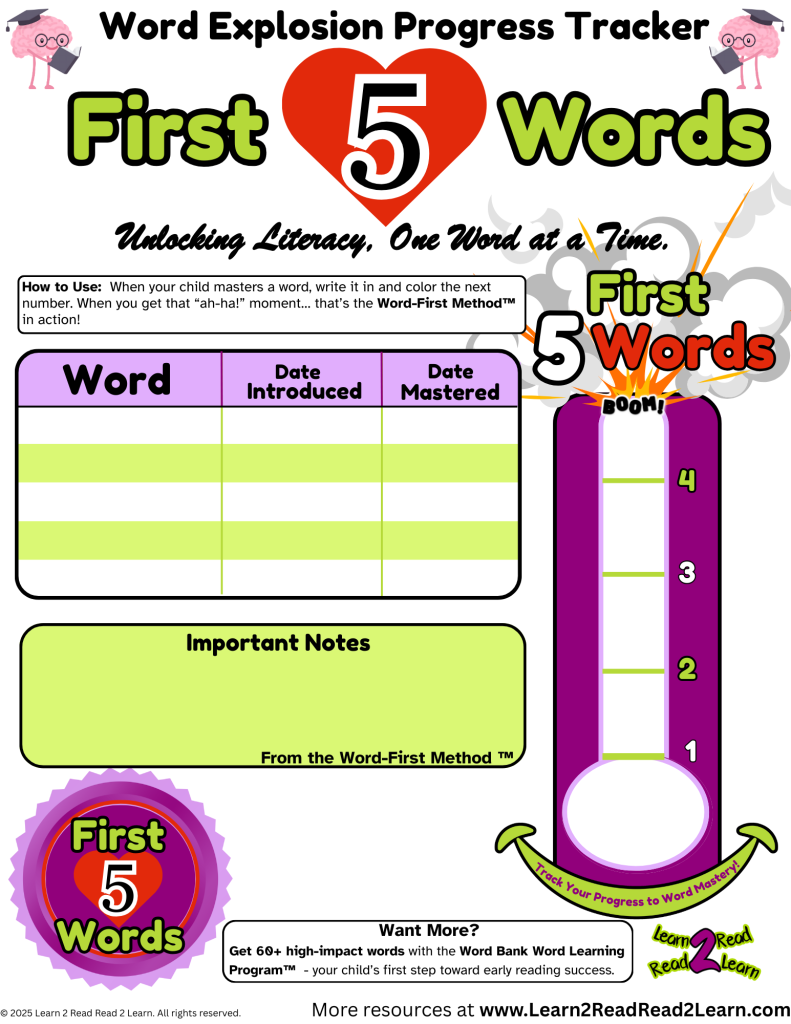
Step 3:
Track progress with the First 5 Words Word Tracker and celebrate every milestone!
Your Child’s Breakthrough Moment
Watch The Magic Happen
What if I told you your child is just 50–60 words away from unlocking a reading superpower?
It’s called The Word Explosion.
At around 50–60 words, something incredible happens:
- Your child learns to recognize and absorb new words naturally—understanding that every object has a written word.
- Their learning momentum skyrockets, making it faster and easier to pick up new words.
- They begin spotting words everywhere—on road signs, menus, books, and more!
- Their desire to learn new words grows, fueling their curiosity and love for reading.
- Once this breakthrough happens, there’s no stopping them!
Top 9 Things All Parents Should Know About Early Literacy
Providing a solid literacy foundation for your child is simpler than you think. These essential insights will help you maximize your child’s potential and build a love for reading that lasts a lifetime.
1. Reading is the single most important skill a child learns.
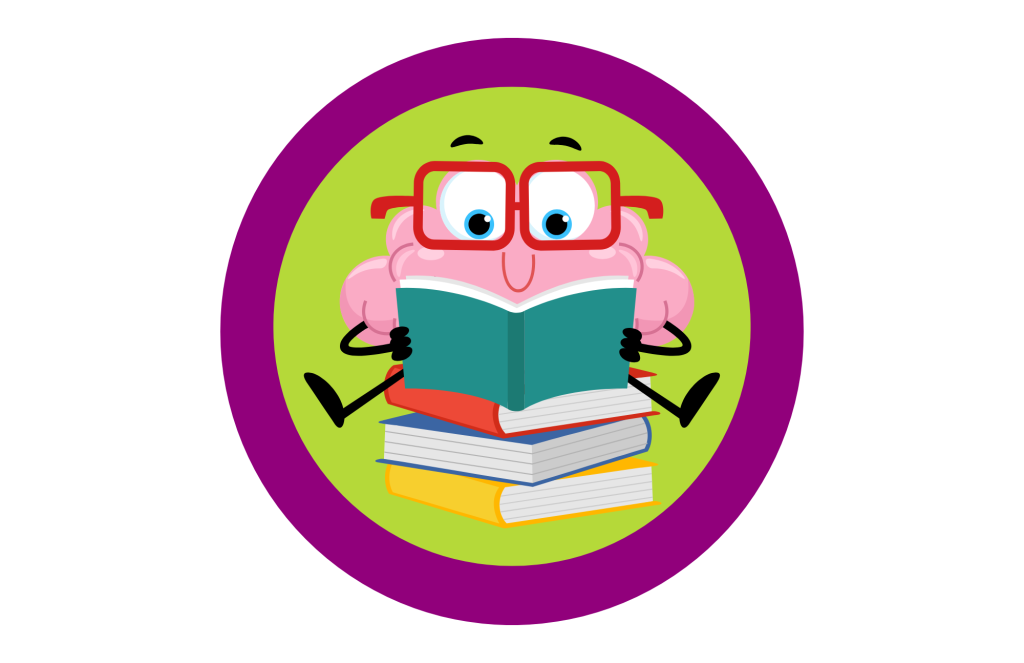
It’s the foundation for all future learning, impacting everything from academics to life success.
2. The Natural Window for Language Learning Closes by Age 6.
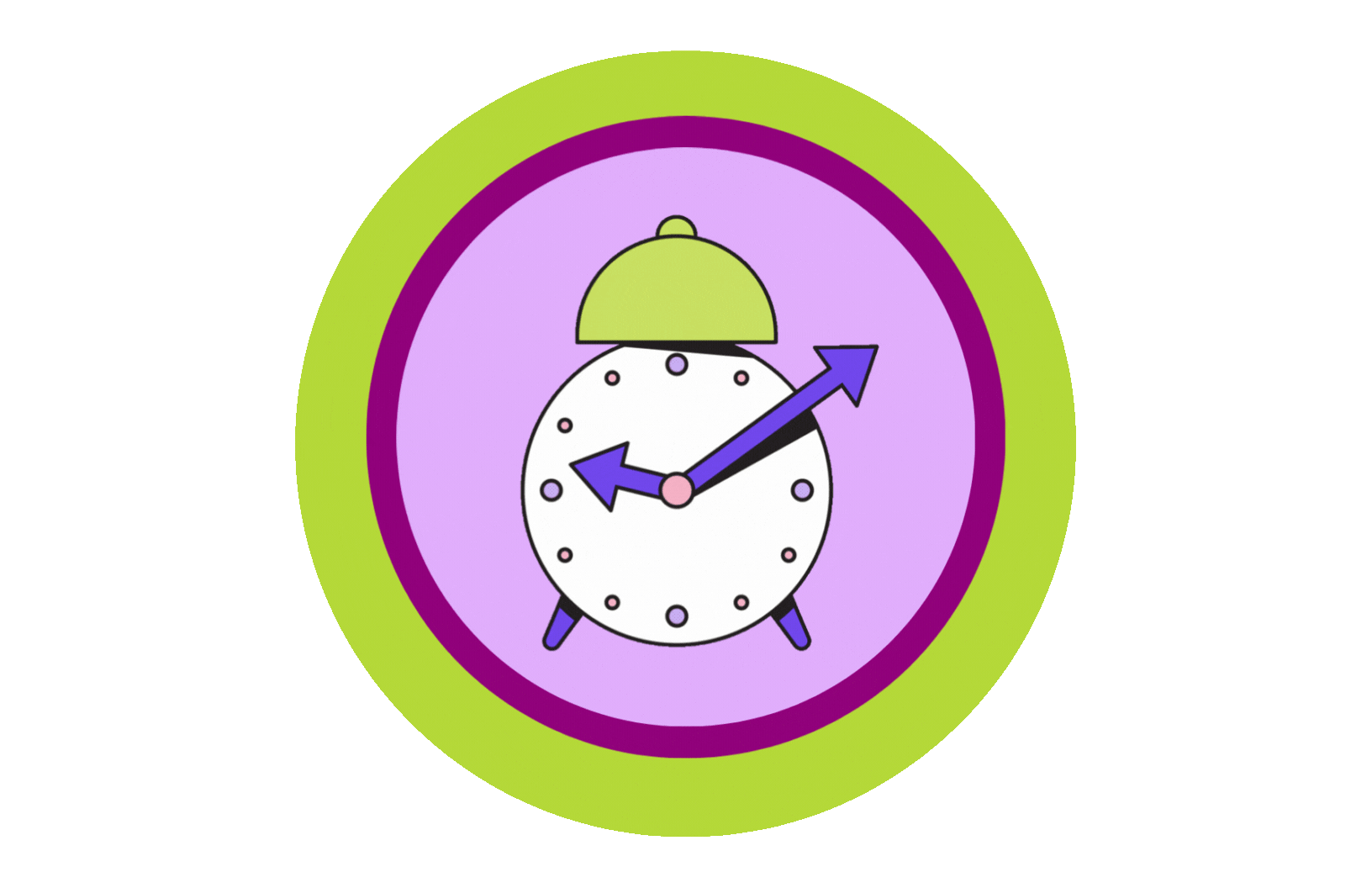
The clock is ticking. This critical window begins at birth, starts to close at age four, and is completely closed by age five or six. During this period, children’s brains are wired to absorb language with ease.
3. Early brain development determines future learning potential.
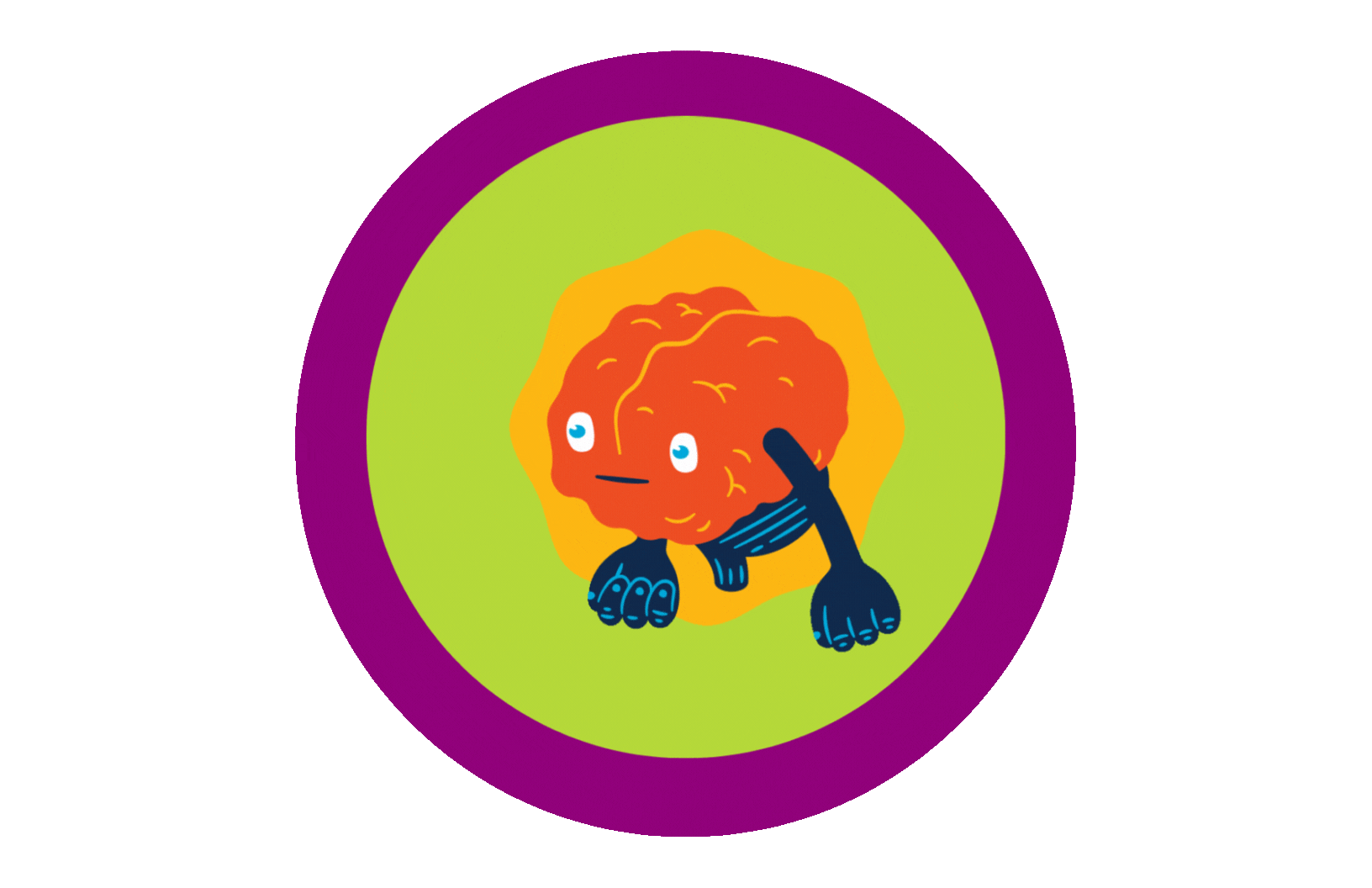
By age 2, the brain is 75% formed, and by age 5, it’s 90% complete.
4. Connecting objects to written words sparks a desire to learn.
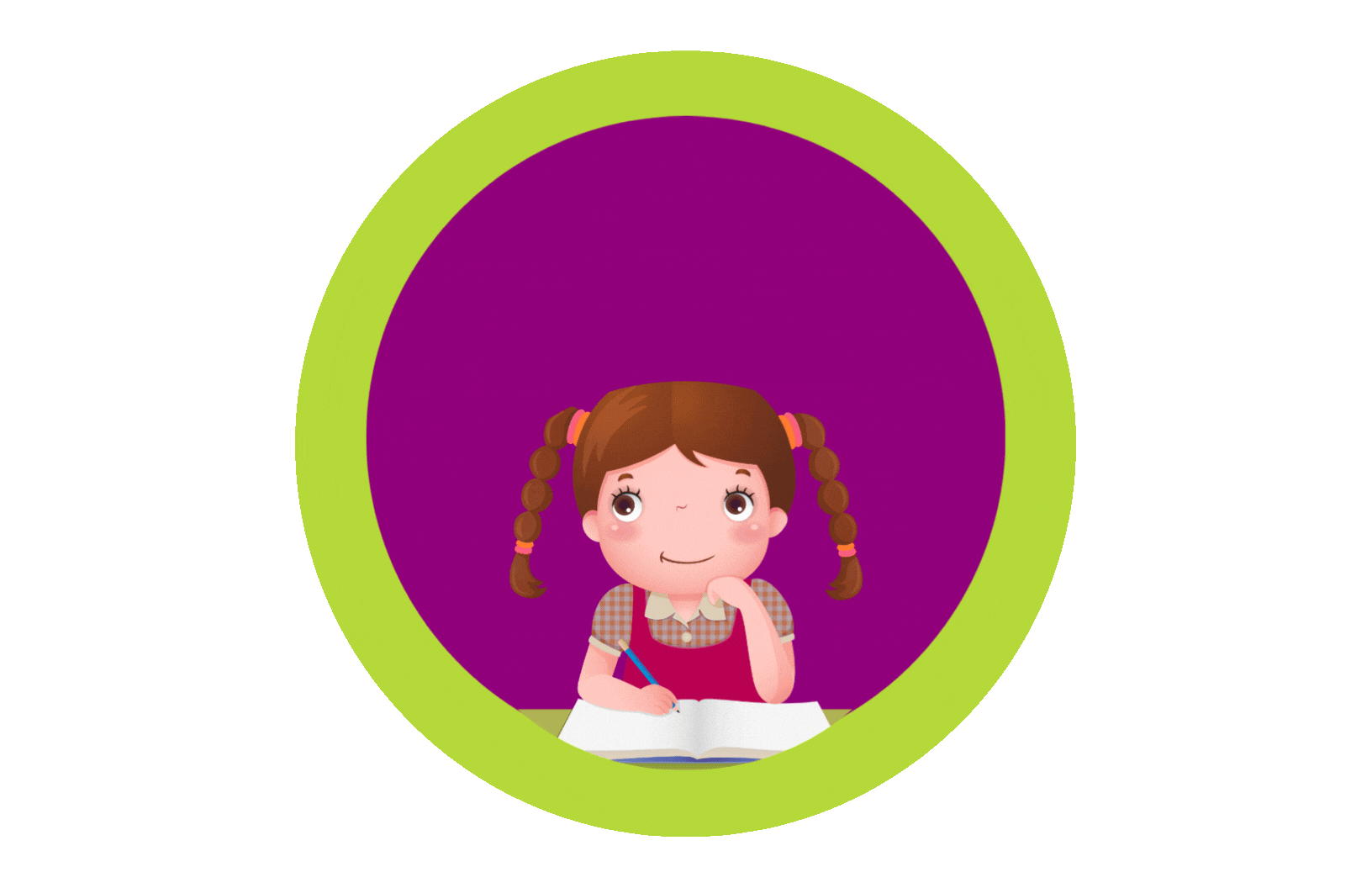
When children realize that there is a written word for every object, it naturally fuels their curiosity and desire to discover more connections between objects and words. It makes reading feel natural and exciting.
How It Works:
- 1. Introduce the written word "ball" while also showing a picture of a ball.
- 2. Their brain links the word to the image, strengthening word recognition.
- 3. They start looking for words everywhere—building curiosity & confidence!
6. Early readers develop higher self-esteem.
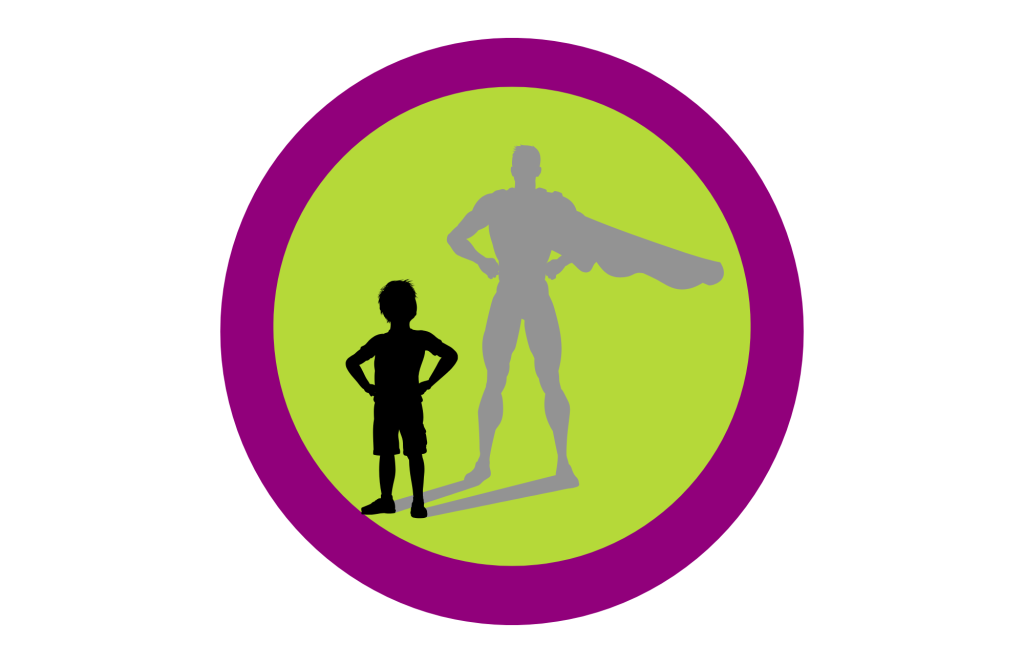
Children who enter school already reading are more confident and better equipped to thrive in the classroom.
Children who start school already reading:
- Feel confident in the classroom.
- Enjoy learning instead of feeling frustrated.
- Participate in discussions & excel in subjects beyond reading.
7. Traditional methods of teaching reading often fall short.
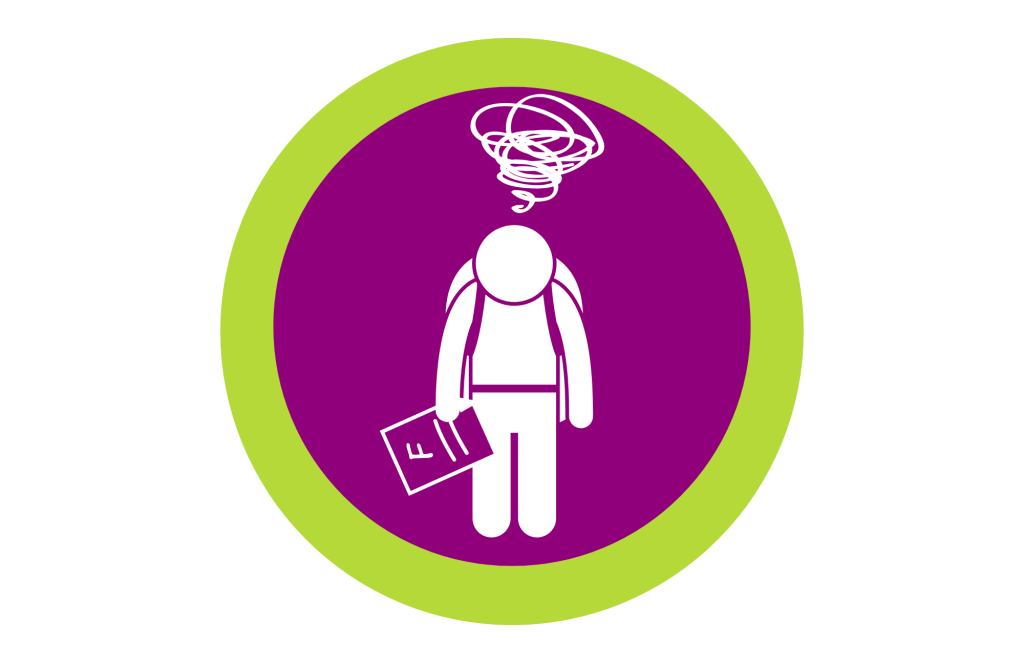
The current system and typical starting ages for teaching literacy aren’t effective for millions of children worldwide, leaving many struggling unnecessarily.
Children who start school already reading:
Many schools teach reading too late—and in ineffective ways.
The Truth:
- Phonics, sight words, and comprehension should be introduced much earlier
- Schools rely too much on memorization instead of true literacy skills.
- Many struggling readers don’t actually need tutoring—just an earlier start.
8. Reading unlocks endless learning opportunities.
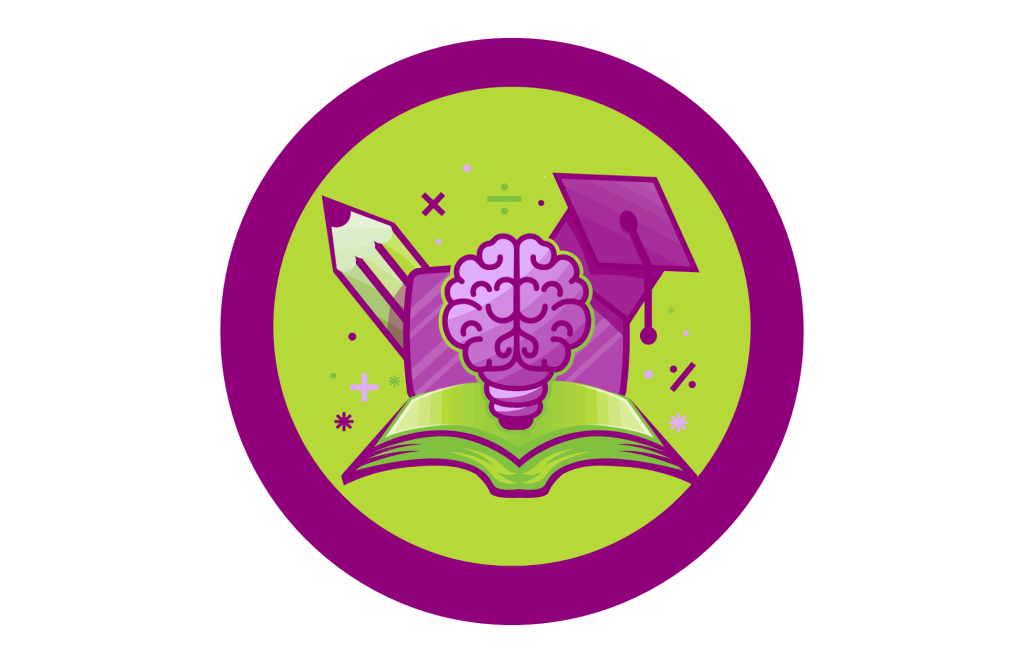
Reading is the key that unlocks everything. It opens the door to knowledge, critical thinking, and success in both school and life.
When a child can read well, they can:
- Explore science, history, math, and more!
- Think critically and solve problems
- Discover books, stories, and ideas that expand their world.
9. You are your child’s first and best teacher
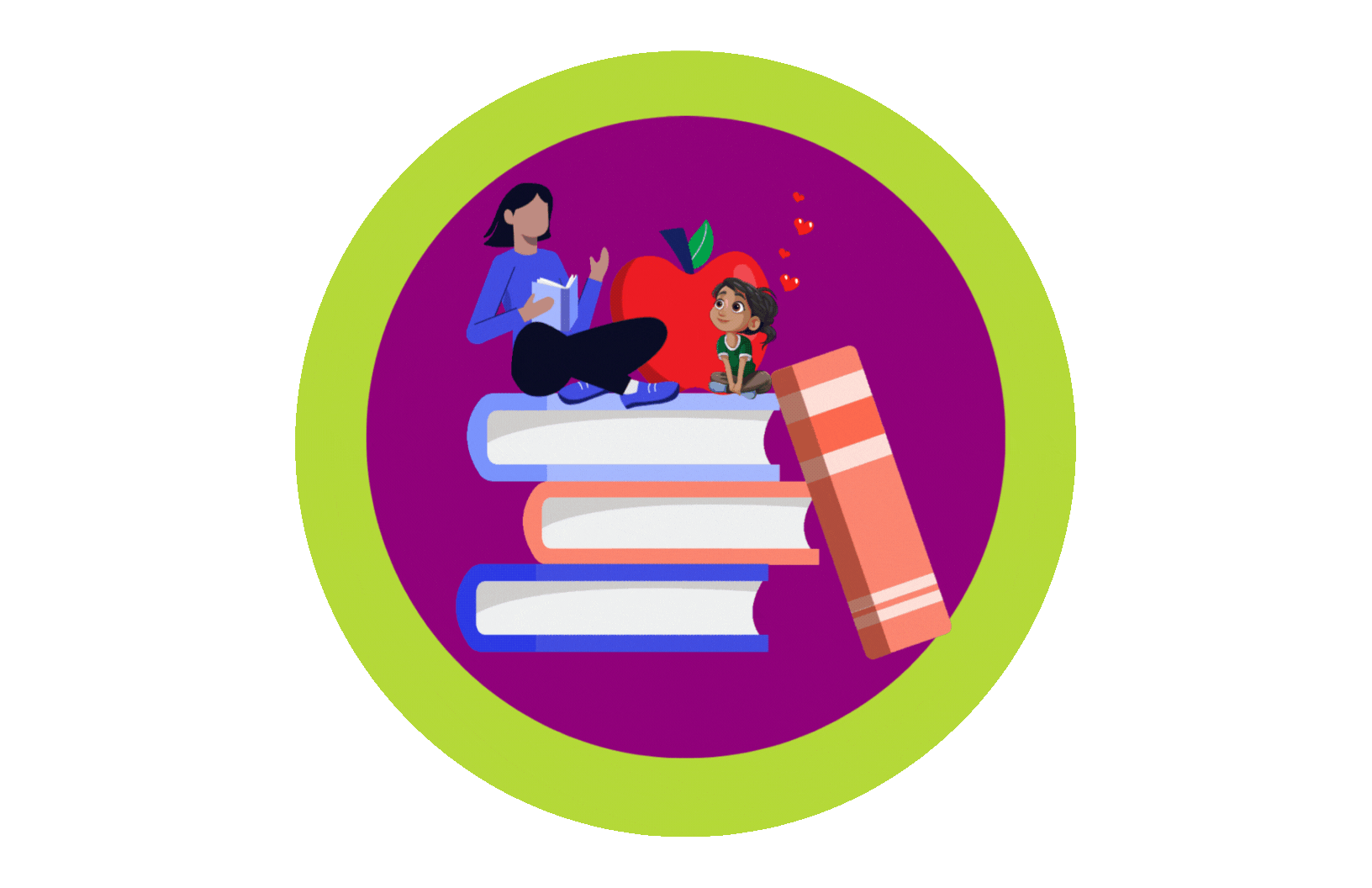
No one influences a child’s learning more than their parents.
As a parent, you play a pivotal role in your child’s literacy journey. By teaching spoken and written language together, you set them on the path to a happier, more successful future.
What you do at home matters more than anything else:
- Talk to them. Every conversation builds language skills.
- Read with them. Every story strengthens literacy.
- Teach them words. Every word they learn unlocks more knowledge.
It’s a Win-Win!
By introducing spoken and written words simultaneously, you create a foundation for both language development and reading mastery. Together, these skills empower your child to become a confident, lifelong learner.
3 Quick Tips to Keep the Learning Going
Consistency is key to unlocking your child’s literacy potential. Here are three simple ways to keep your child engaged every day.
Tip 1: Make It Fun

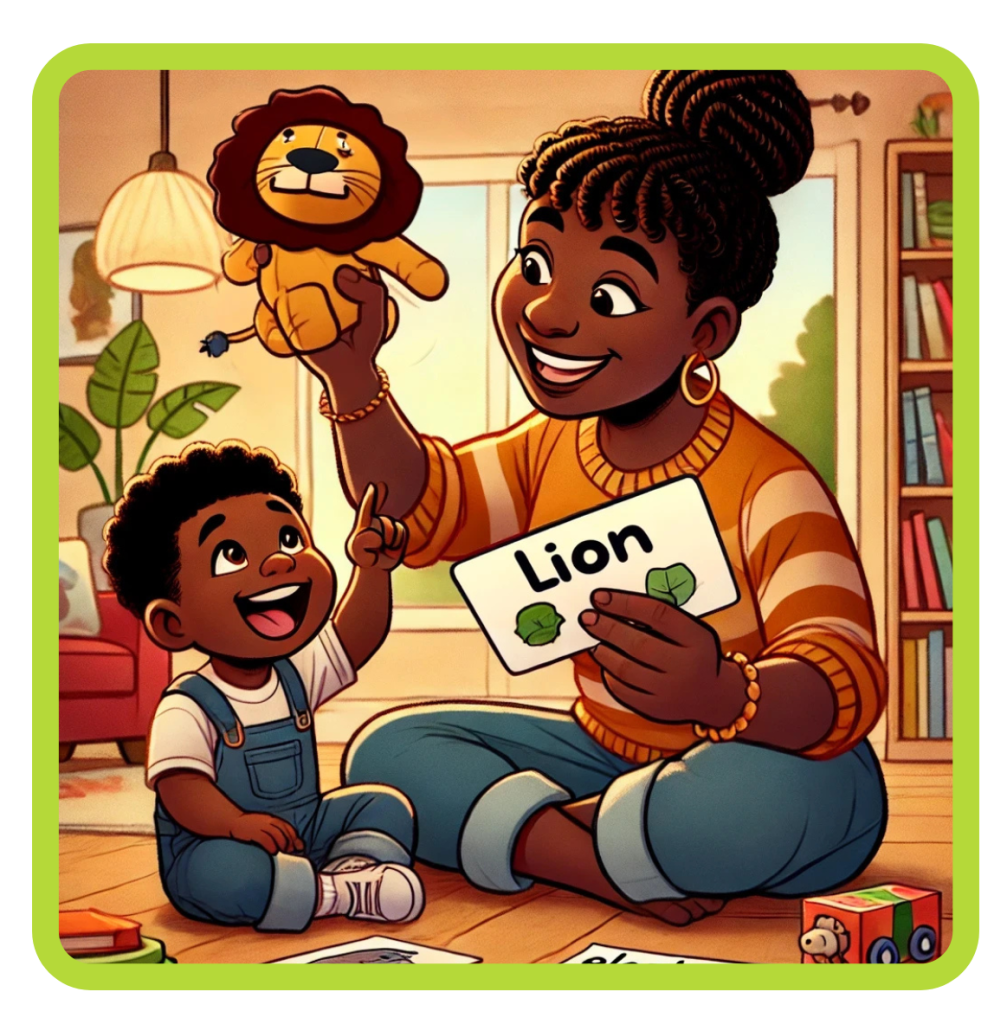
- Use games, songs, or rhymes to reinforce words.
- Example: “Play a game where your child finds items in the room that match their word cards.”
Tip 2: Read Daily
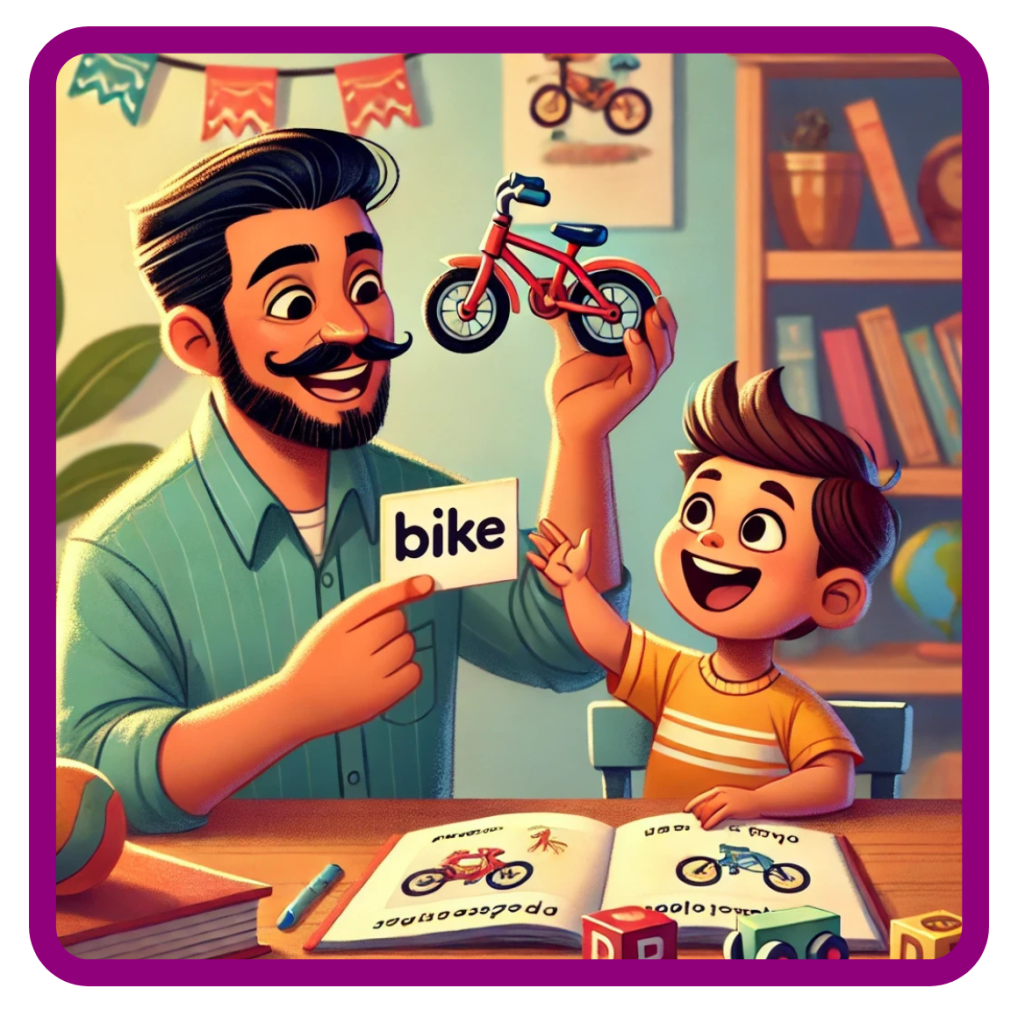
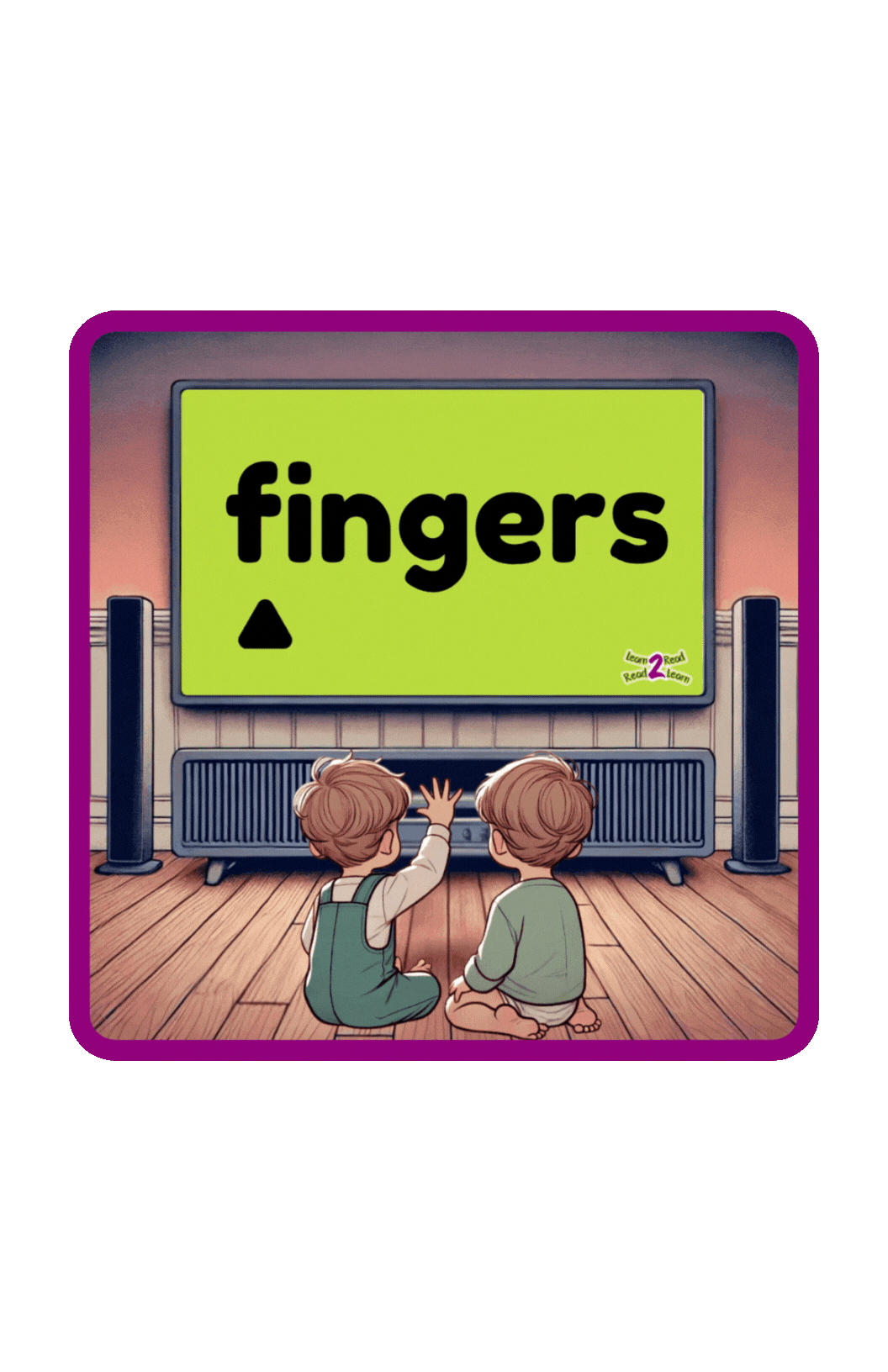
- Build a daily reading routine, even if it’s just 10 minutes.
- Example: “Choose a book with repeated words or rhymes for easy reinforcement.”
Tip 3: Label Household Items
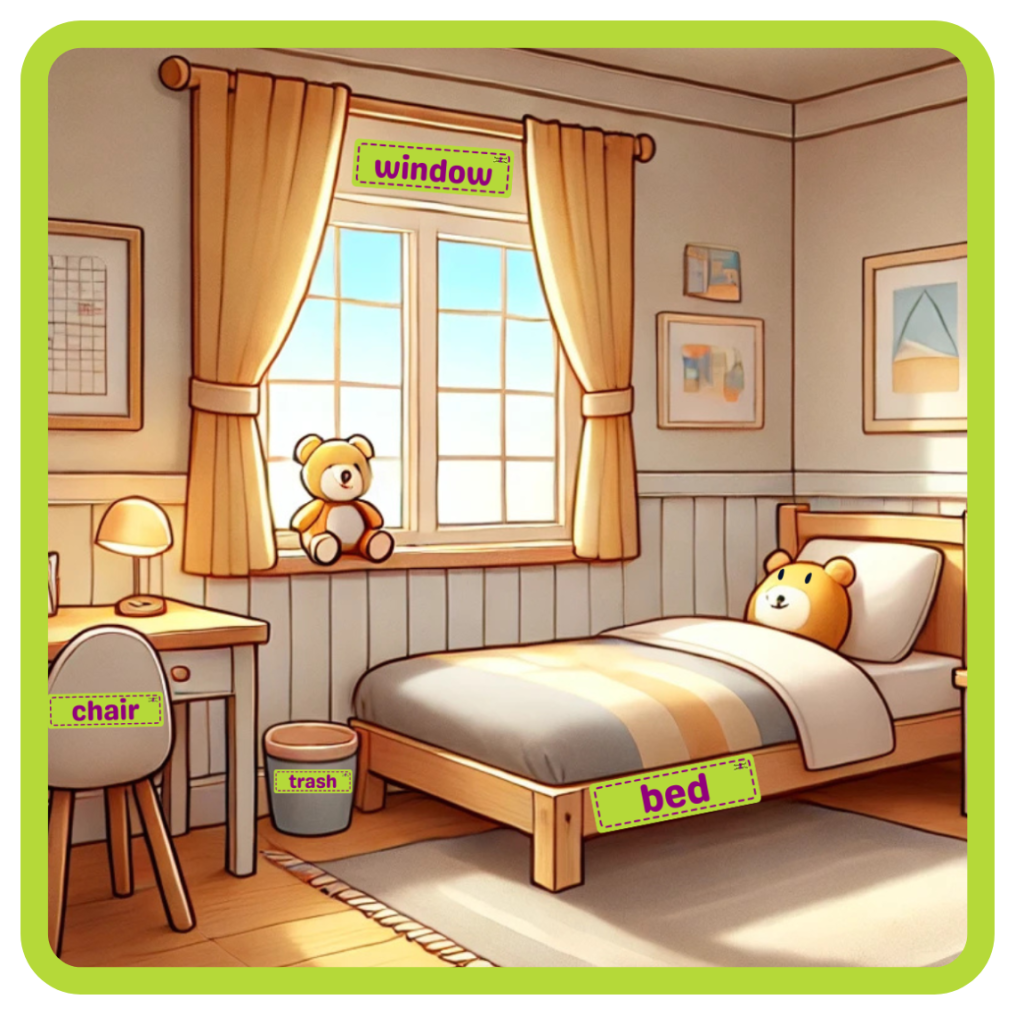
- Place labels on everyday objects to help kids connect words to real-life objects
- Example: Put a label on their bed and say “bed” every time you see it!
Celebrate Progress
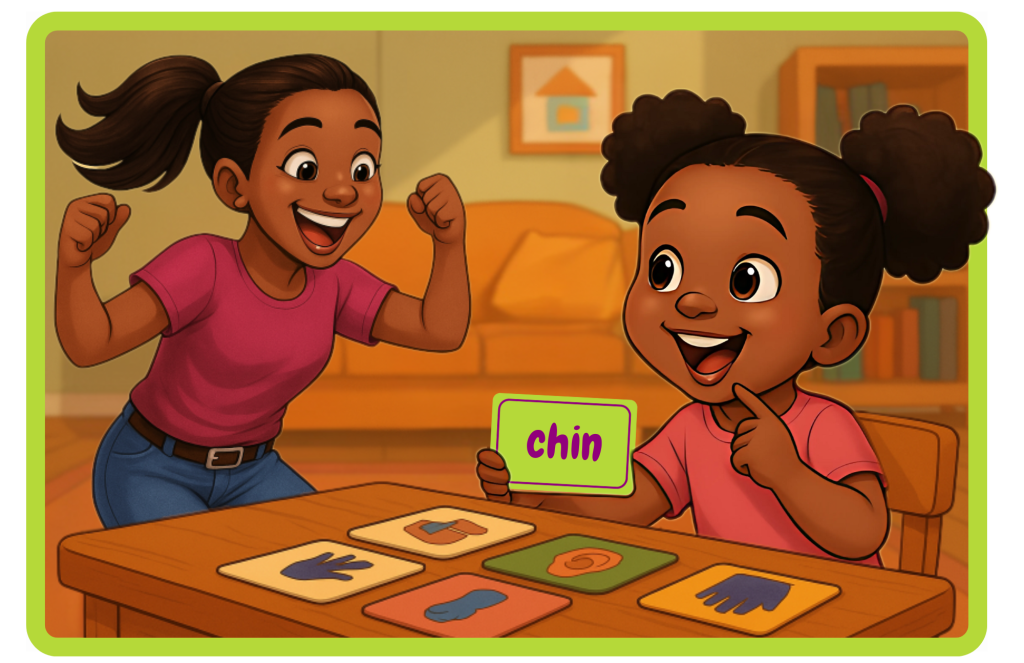
- Acknowledge small wins to keep your child motivated.
- Example: “Use stickers, stars, or a reward chart to mark milestones.”
The Science of Reading: Why It Matters
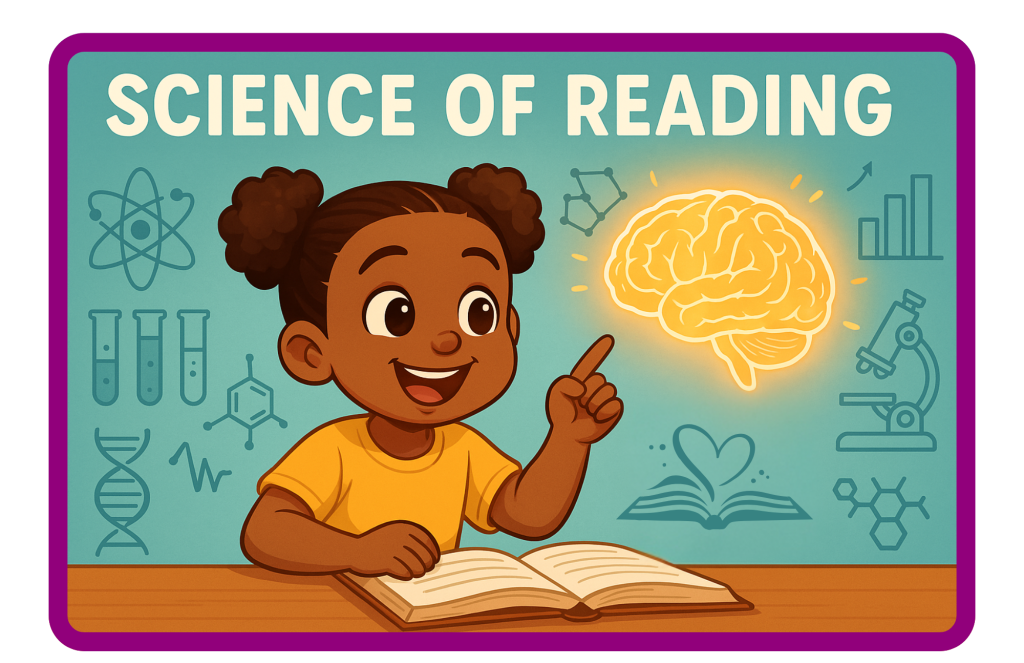
Have you ever wondered why some children learn to read easily while others struggle?
The answer lies in the Science of Reading—a research-backed approach that explains how the brain learns to read and what actually works.
Decades of research in neuroscience, linguistics, and education confirm: reading is not a natural skill—it must be taught intentionally.
Want to know what works best?
- Discover:
- How the brain processes words and builds reading fluency
- The #1 mistake parents make when teaching reading
- Why some traditional methods set kids up for failure
Your Complete Roadmap to Early Reading Success!
Your step-by-step guide to unlocking early literacy… No guesswork—just a proven, simple plan!

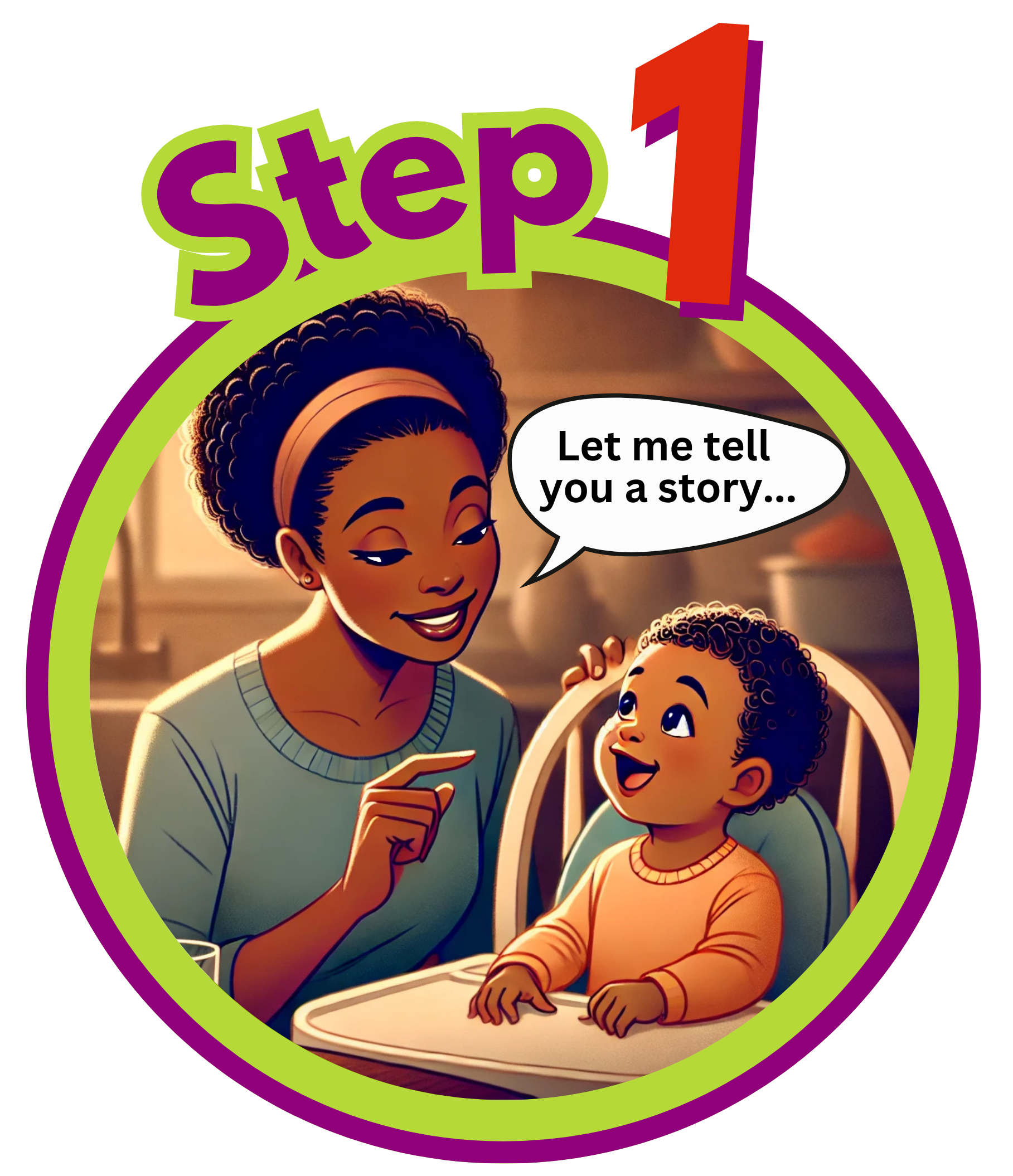
Your baby naturally absorbs spoken language just by hearing you talk. The more you talk, the more words they learn!
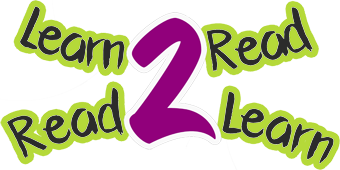
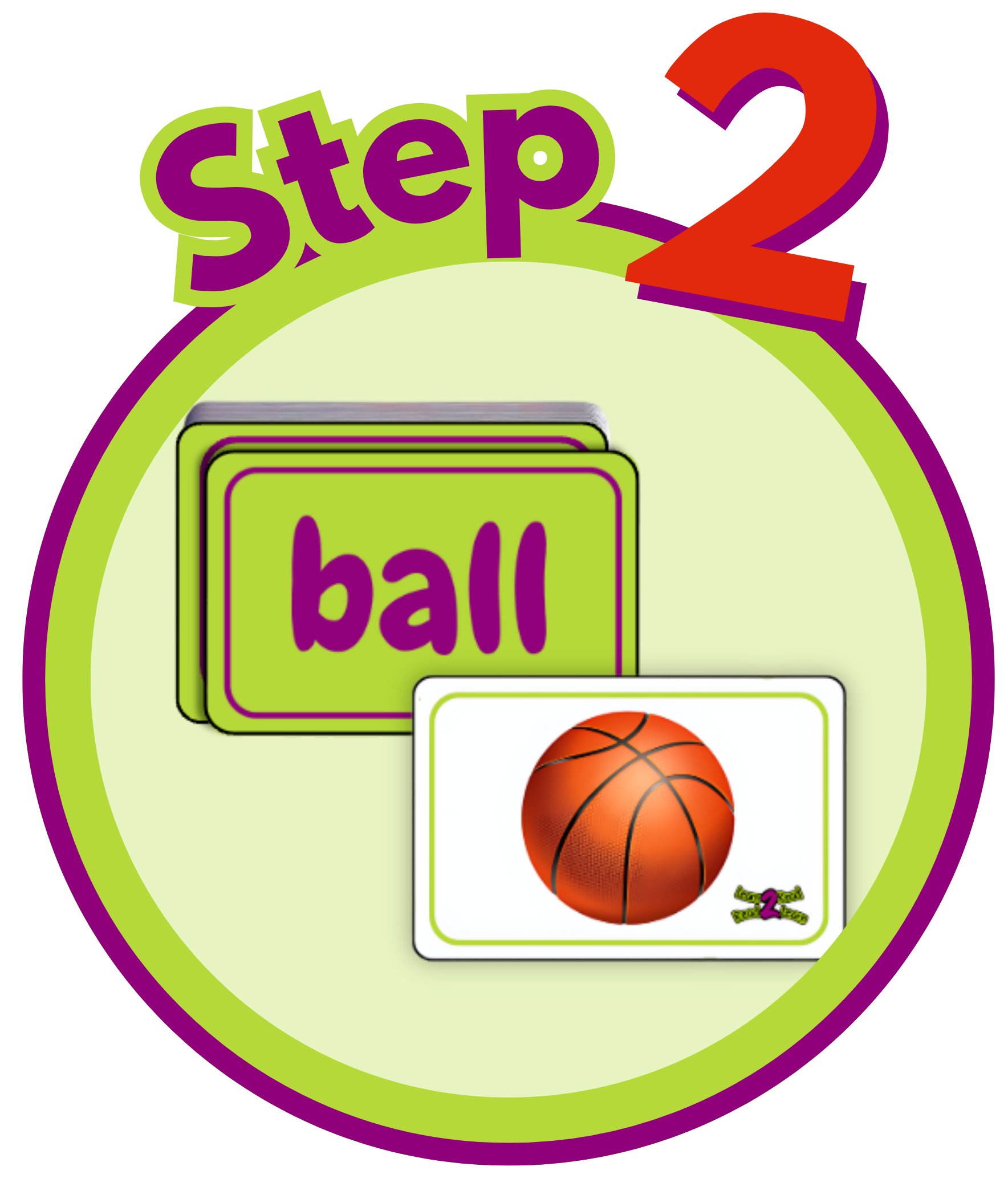
We introduce the written word alongside objects children have already learned to say or recognize. This helps them connect the object, the spoken word, and the written word seamlessly.
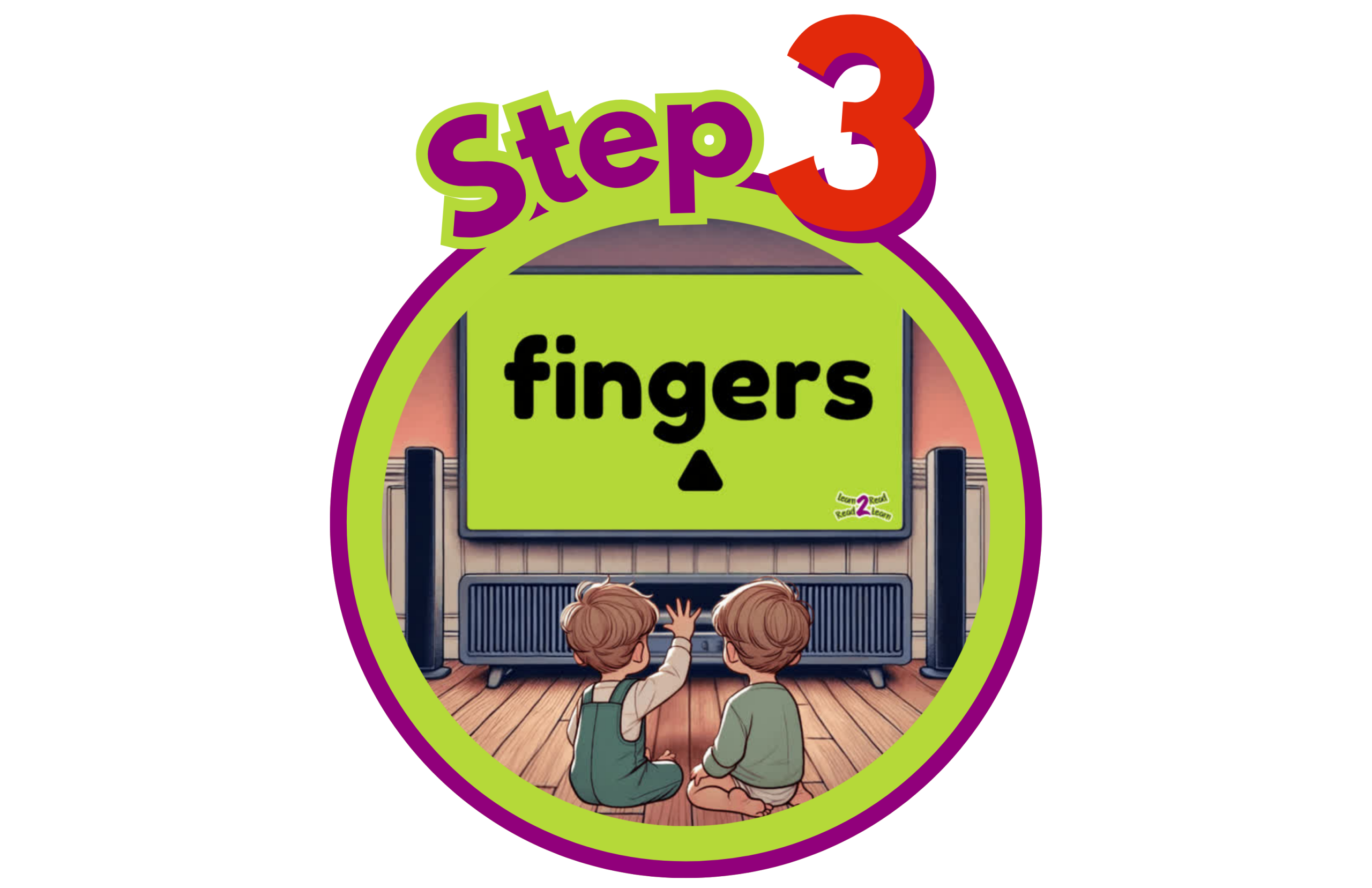
The secret is consistency. The more they see the word while hearing it,
the stronger the connection becomes.
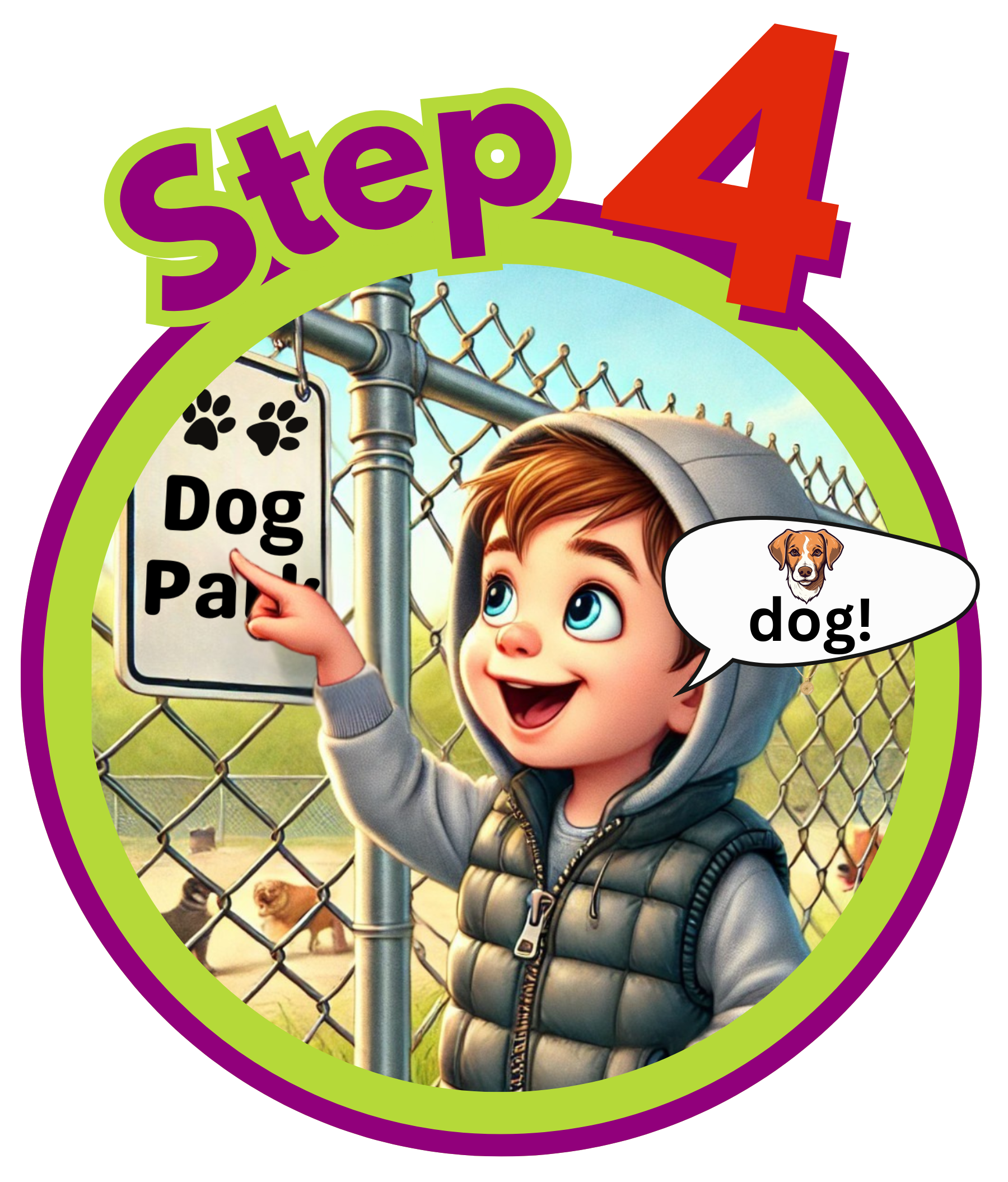
© 2025 Learn 2 Read Read 2 Learn. All rights reserved.
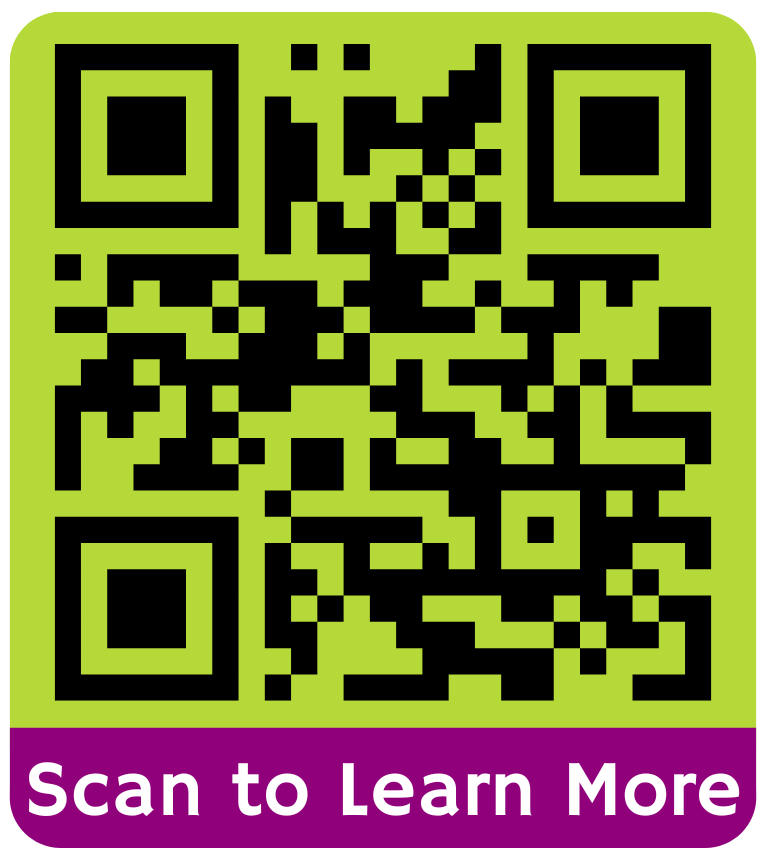
Now that you understand why early literacy is so important, it’s time to take action! Our Step-by-Step Guide walks you through four simple, research-backed steps to help your child:
- Recognize words naturally in their environment
- Use effective daily learning strategies that make reading fun
- Build confidence through small wins & track progress
- Unlock the Word Explosion!
- Follow the guide above or download it as a PDF for easy reference.
- Download the Step-by-Step Guide as a PDF.
Ready to Start?
